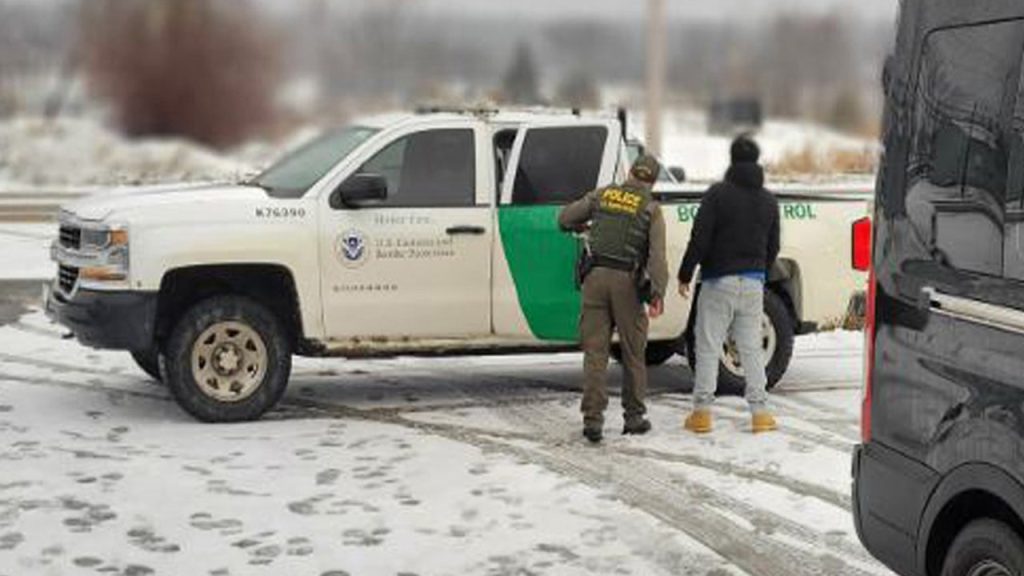Concerns over an increase in illegal immigration from Romania to the United States are rising following a significant change in Canadian visa regulations. An immigration expert has pointed out that the easing of these requirements has made it simpler for Romanians to enter Canada and subsequently cross into the U.S. The U.S. Customs and Border Protection reported a dramatic increase in Romanian nationals apprehended at the Houlton Sector in Maine, where there were notable differences between fiscal years.
| Article Subheadings |
|---|
| 1) Recent Increase in Romanian Border Crossings |
| 2) Insights from Immigration Experts |
| 3) The Role of Canada in Migration Patterns |
| 4) Upcoming Changes in Visa Regulations |
| 5) Consequences of Increased Immigration |
Recent Increase in Romanian Border Crossings
In fiscal year 2023, Romanian nationals accounted for less than 1% of all illegal crossings into the U.S. through the Houlton Sector in Maine. However, this figure dramatically increased in fiscal year 2024, with Romanians now representing nearly 12% of border crossers. According to U.S. Customs and Border Protection, there were a total of 344 illegal crossings identified in the Houlton Sector during this period, with 40 of those individuals confirmed as Romanian nationals. This sharp rise calls attention to changing migration patterns in North America.
Insights from Immigration Experts
Mark Krikorian, the executive director of the Center for Immigration Studies, provided insights into the factors driving this surge in illegal immigration. He noted that the increase can be attributed to relaxed visa requirements imposed by Canada in 2017, which enabled easier access for Romanians. Krikorian commented,
“The reason they’re coming from Canada is that Canada lifted visa requirements for Romanians.”
This lifting of restrictions has created a more accessible path for Romanians wishing to reach the U.S. by first entering Canada, despite the unknown motivations behind their choice to migrate south rather than remain in Canada.
The Role of Canada in Migration Patterns
The Houlton Sector, located in northeastern Maine bordering New Brunswick, Canada, serves as a critical point of entry for many migrants. Krikorian suggested that many Romanians may be seeking to reunite with family members in larger U.S. cities. The proximity of Interstate 95, which runs through Houlton, facilitates travel for migrants heading south, potentially offering them easier connections to relatives and communities already residing in the U.S.
Upcoming Changes in Visa Regulations
Looking ahead, significant changes in U.S. visa regulations for Romanian nationals are expected to reshape the current migration landscape. As of the end of March, Romanians will become eligible for the Visa Waiver Program. This program enables citizens from participating countries to travel to the United States for up to 90 days without a visa, primarily for tourism or business purposes. Krikorian stated,
“The number of illegal Romanian immigrants will drop, but the number of legal Romanian entrants will rise.”
However, there are concerns that some individuals may overstay their visas, resulting in a shift in the dynamics of illegal immigration.
Consequences of Increased Immigration
The shifting patterns of Romanian immigration are expected to have various implications for both the U.S. and Canada. While Krikorian predicts that illegal immigration numbers among Romanians will decline due to the new visa program, he anticipates a transformation of this issue with potential increases in visa overstay cases as migrants leverage the newly available legal pathways. He further elaborated that “illegal immigration of Romanians will just switch” from border crossings to overstaying visas, emphasizing the need for comprehensive monitoring and policy responses to anticipate these new trends.
| No. | Key Points |
|---|---|
| 1 | There has been a significant increase in illegal border crossings by Romanian nationals in the Houlton Sector, jumping from less than 1% to nearly 12% of total crossings. |
| 2 | Eased Canadian visa requirements since 2017 have facilitated easier entry for Romanians into Canada, prompting many to cross into the U.S. |
| 3 | The Houlton Sector serves as a critical route for migrants heading south to connect with families in larger U.S. cities via Interstate 95. |
| 4 | The Visa Waiver Program will allow Romanian nationals to enter the U.S. without a visa, expected to decrease illegal crossings but potentially increase instances of visa overstays. |
| 5 | Experts suggest that strategies will need to adapt to this evolving immigration landscape, particularly in monitoring legal entries to prevent overstays. |
Summary
The recent surge in illegal immigration from Romania to the United States highlights the complexities of migration influenced by changing visa policies and geography. The easing of restrictions in Canada has facilitated this trend, raising questions about family reunification and migrants’ motives. As new regulations emerge, significant changes are expected in how immigration is managed, with an emphasis on preventing visa overstays. Policymakers will need to approach these issues with a nuanced understanding of the broader implications for U.S. immigration policy.
Frequently Asked Questions
Question: Why are more Romanians crossing into the U.S. illegally through Canada?
More Romanians are crossing into the U.S. illegally through Canada due to relaxed visa requirements that make it easier for them to enter Canada. Once there, they may choose to move south into the United States.
Question: What does the Visa Waiver Program entail for Romanian citizens?
The Visa Waiver Program allows Romanian citizens to travel to the United States for tourism or business without a visa for up to 90 days, which is expected to change the patterns of their immigration.
Question: What impact might the changes in immigration regulations have on illegal crossings?
While the number of illegal crossings is expected to decrease due to the Visa Waiver Program, there may be an increase in legal entries with some individuals potentially overstaying their visas, shifting the focus of immigration challenges.


